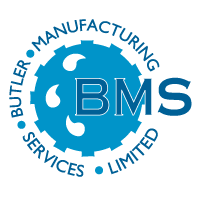Sewage Treatment Terminology Explained A-Z Part 3; C to E; Clarifier to Eutrophication
Introduction
Welcome to our education blog explaining terms used in sewage treatment from A-Z. Part 3 is from Clarifier to Eutrophication.
In this third part of our A-Z series, we’ll explain sewage treatment terms starting with C to E, focusing on frequently used terminology in the industry. These explanations are designed to clarify technical jargon for both professionals and newcomers.
14. Clarifier:
See Humus Tank.
A settling tank used to remove solids from wastewater as part of the treatment process.
15. COD (Chemical Oxygen Demand):
Measures the amount of oxygen required to chemically oxidise organic matter in sewage using an oxidising agent like Potassium Dichromate.
COD is typically higher than BOD, as it includes both biologically and chemically oxidisable compounds.
16. Combined System:
A sewerage system where both foul water (sewage) and surface water (rainwater) are conveyed in the same sewer.
Key Consideration: Combined systems deliver large flows to sewage treatment plants during wet conditions, which must be accounted for in plant design.
17. Denitrification:
A process where Nitrate (NO₃) is converted into Nitrogen (N₂) and Oxygen (O₂) gases in an anoxic zone.
Importance: The only method to reduce Total Nitrogen (TN) in wastewater.
18. Dry Weather Flow (DWF):
The average daily sewage flow entering a plant after 7 days without rain (excluding holidays or anomalies).
Rainfall in the preceding 7 days must not exceed 25 mm on any day.
19. Effluent:
The discharge from a sewerage system into a treatment plant (see Influent).
Also refers to the treated water discharged from a sewage treatment plant (see Final Effluent).
Commonly used to describe wastewater products from premises or processes.
20. Effluent Treatment Plant/System:
Synonym for Sewage Treatment Plant/System.
21. Eutrophication:
A process where water becomes excessively enriched with organic nutrients, leading to:
Overgrowth of aquatic plants and algae.
Transformation of water bodies into marshland, and eventually dry land.
Additional Resources
For more detailed explanations of sewage treatment parameters, visit the BMS Education Blog/Customer Questions section, which covers:
Coming Up Next
The next article will cover terms starting with F to K, including Ferric Sulphate and Kjeldahl Nitrogen.
Questions?
If you have any questions of would like information on package wastewater treatment products, feel free to contact us.
About BMS
BMS is a quality manufacturer of package products for wastewater and stormwater treatment:
Established: 1986
Global Reach: Exported to over 50 countries.
Family Business: A third-generation company with deep expertise.
BMS Product Range
BMS provides a wide array of surface water and wastewater treatment products, including:
View the full product catalogue here
Additional Services by BMS
Free Design Service: For sewage treatment, pump stations, and surface water management.
Operation and Maintenance: Full services for existing installations, including repair, advice, and testing.
Free CPD Presentations: Available for sewage treatment and surface water management, delivered at your location.
We would be delighted to discuss any requirements you might have, and we are available to meet you at your convenience. Contact us today.
© Butler Manufacturing Services 2024.

